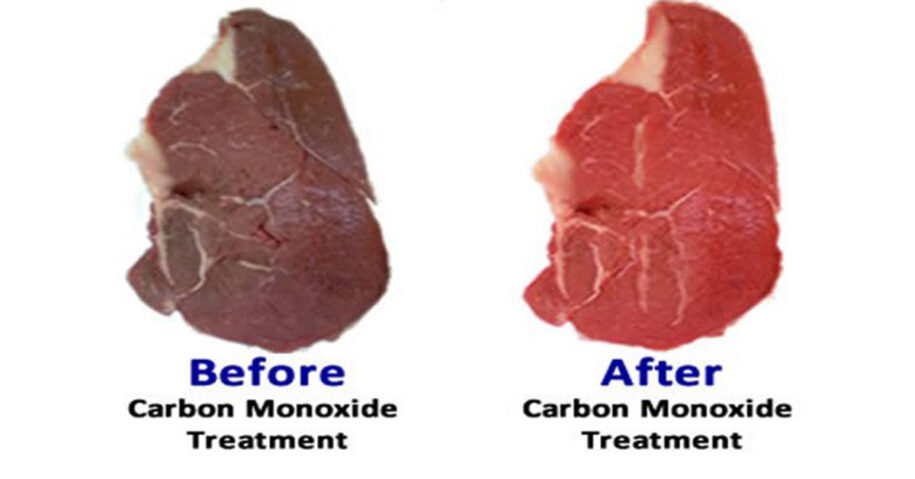FDA Approved: Decayed, Carbon Monoxide Treated Meat Being Sold as “Fresh”
This information is enough to make you second-guess trusting Congress, the FDA, and your local corporate grocery store chain. Banned in many countries, this toxic practice can make seriously decayed meat look as though it is fresh for weeks past it’s ended shelf life.
Most consumers have no idea that over 70% of the beef and chicken in the United States and Canada is treated with toxic carbon monoxide gas and that the FDA allows this treatment, despite the fact that there are known health risks for the consumers.
In 2007, a bill was introduced in Congress that would require that the treated meat be labeled. However, it was never enacted. (Bill: H.R 3115 (110) introduced on July 19, 2007.)
Although the FDA is allowing the use of carbon monoxide packing, the FDA has also warned of the significant safety concerned associated with using reduced oxygen packing (like carbon monoxide packaging) stating “the inhibition of spoilage bacteria is significant because, without these competing organisms, tell-tale signs signaling that the product is no longer fit for consumption will not occur.”
Usually, cooking meat will remove various toxins, but not all toxins. So even if the meat is properly prepared and cooked, it cannot be considered safe.
FDA regulations specifically prohibit the use of carbon monoxide in “fresh meat products” due the fact that the carbon monoxide covers the appearance of spoilage, and promote consumer deception. Hypocritically, though, the FDA accepts GRAS (Generally Regarded As Safe) notifications pertaining to the use of carbon monoxide in fresh meat. The FDA has even evaluated the issue regarding carbon monoxide being used in meat products on at least three occasions and they still claim carbon monoxide is still GRAS.
The U.S. Department of Agriculture’s Food Safety and Inspection Service (FSIS) also have regulations that prohibit ingredients that function to conceal damage or inferiority, or to give the appearance of a product better or greater value. Due to these many safety concerns, various countries have banned the use of carbon monoxide in certain foods. The European Union has banned the use of carbon monoxide in meat and tuna after the European Commission’s Scientific Committee on Food concluded: “The stable cherry-color can last beyond the microbial shelf life of the meat and thus mask spoilage.” Canada, Japan, and Singapore have similarly banned the use of carbon monoxide in tuna.
Carbon monoxide (often referred to as CO) is a colorless, odorless, tasteless gas, one measly oxygen molecule away from the carbon dioxide we all exhale. But that one molecule makes a big difference in that it does very, very bad things to the human body at very, very low concentrations.
CO is toxic because it sticks to hemoglobin, a molecule in blood that usually carries oxygen, even better than oxygen can.
When people are exposed to higher levels of CO, the gas takes the place of oxygen in the bloodstream and wreaks havoc. Milder exposures mean headaches, confusion, and tiredness. Higher exposures mean unconsciousness and death, and even those who survive CO poisoning can suffer serious long-term neurological consequences.
So, how can you avoid buying meat that not only has been contaminated with toxic chemicals but also has the potential of being laden in bacteria? Continue to educate yourself on the truth regarding what you put into the mouths of yourself and your family, and make sure that you buy organic grass fed local and trusted meat only.


